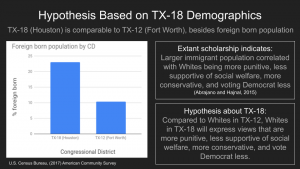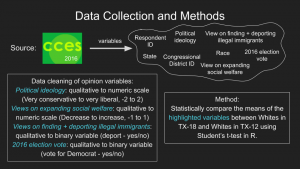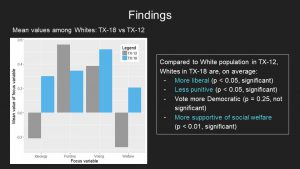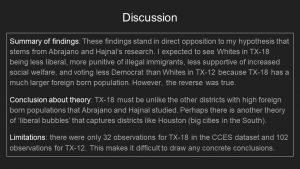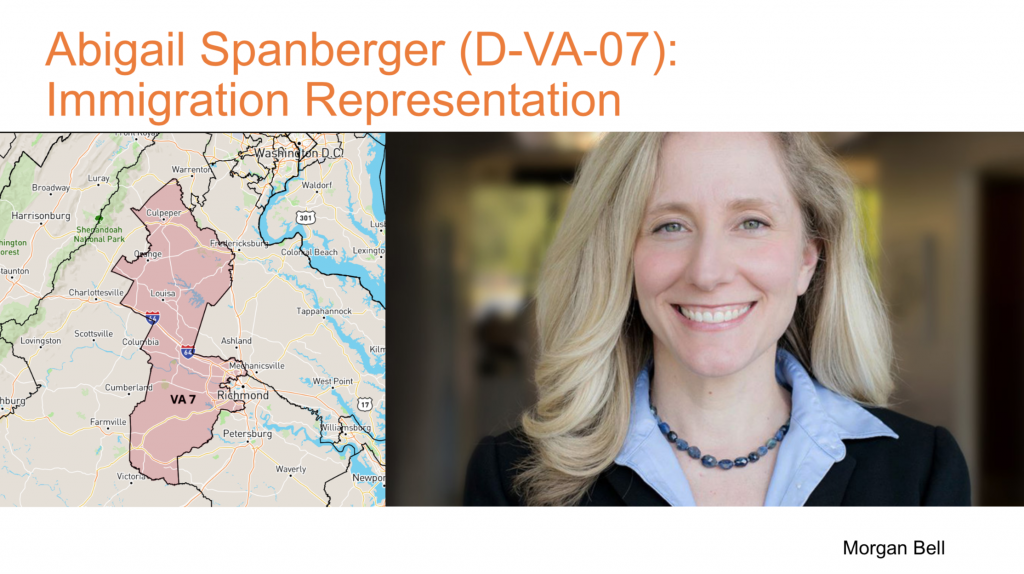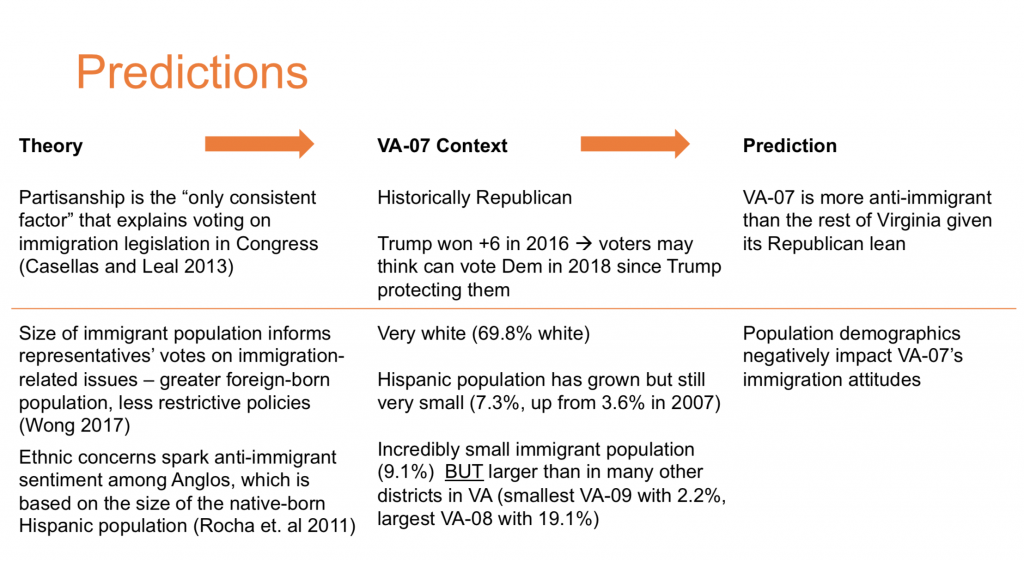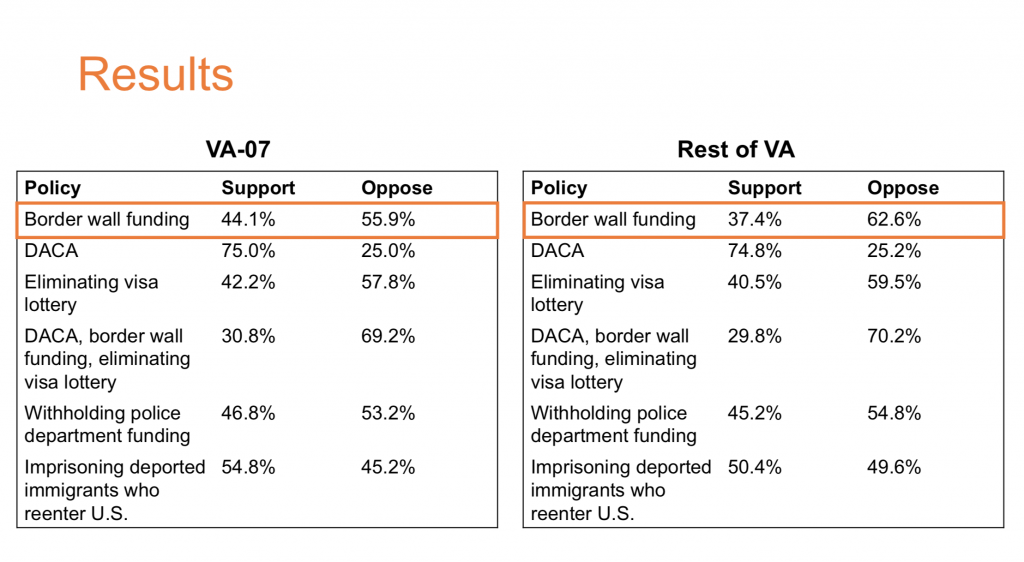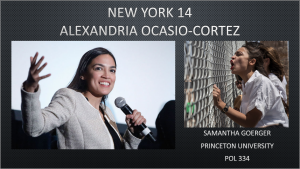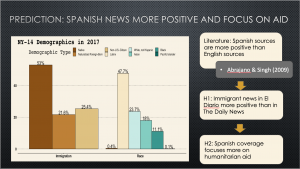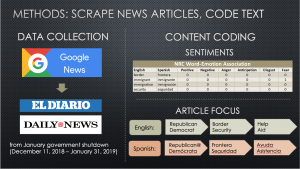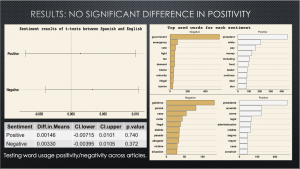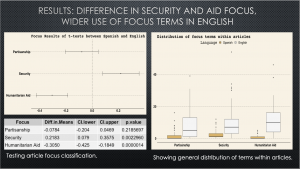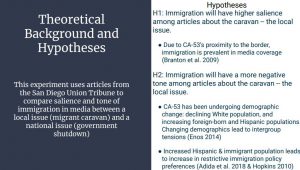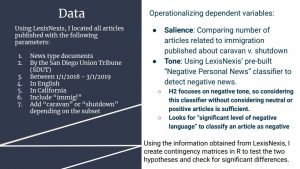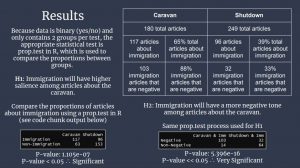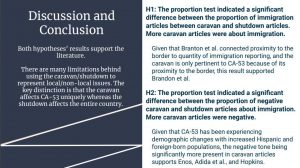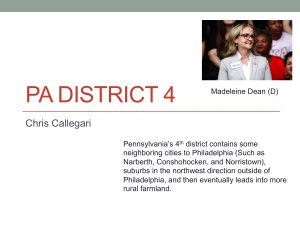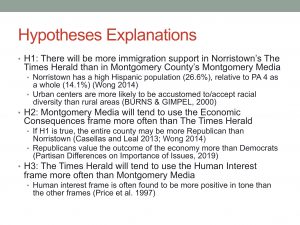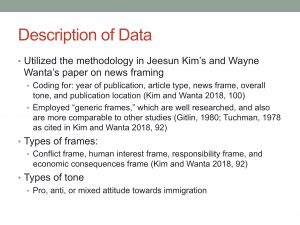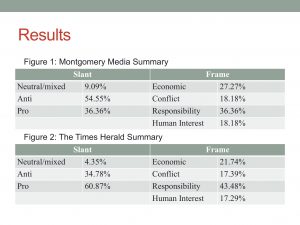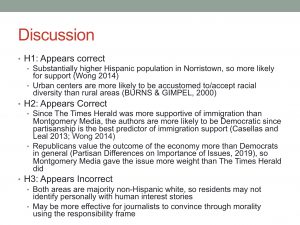
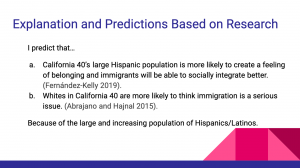
Slide 1: California’s 40th congressional district is a largely Hispanic district that contains the areas of Downey, Mayhood, Vernon, East Los Angeles, Los Angeles, Bell, Bell Gardens, and more. In the last 10 years, the Hispanic population has increased by 7.3 percentage points. Due to this large Hispanic population and its increase, I predict that California 40’s immigrants are more likely to have a feeling of belonging and will be able to socially integrate better. This is based on the research from Fernández-Kelly 2019, who studied the integration paradox in Princeton (where there are lots of opportunities for immigrants but a smaller immigrant population) and in Trenton (where there are less opportunity but a larger immigrant population). Here she found that a large Latino presence can create a feeling of belonging to other Latino immigrants, this would help them socially integrate better. In the research done by Abrajano and Hajnal 2015, who studied the consequences of negative attitudes towards immigration, they state that in a large Hispanic population, whites are more likely to think immigration is a serious problem. Based on this, I also predict that whites in California 40 are more likely to think immigration is a serious issue.
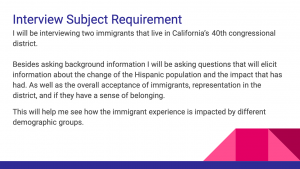
Slide 2: To test my prediction I interviewed two immigrants that live in California’s 40th congressional district, Sandra Vilariño and Erick Vilariño. I asked them individually where they immigrated from and when, as well as why and what the process was like. The interview questions were as following: What are the different population or ethnic groups in the area and have you noticed any changes in them over the last 10 years, or since you arrived in the US? What impact would you say these demographic shifts have had on the community? Has this affected your daily life activities or political participation? What are the major issues immigrants face in this area? What could be done to fix this? Would you generally say there is widespread acceptance and openness to immigrants by non-immigrant or white American population? What do you think their opinion is and has it changed in the last 10 years? Do you feel represented in politics? Do you and other immigrants you know participate in voting or have high levels of participation? What would help you vote or feel better represented in your district? Do you feel you belong in your district? I believe these questions will help me see how the impact of California 40’s population change on the immigrant experience.

Slide 3: Both immigrants are from Cuba and immigrated to California 40 in 1995. Erick Vilariño said that the immigration process for him was simple because he qualified for a visa lottery and won a visa to the U.S. He wanted to come to the U.S. for better opportunities and a better life. All of his friends are immigrants. He believes that the district contains majority Hispanics and a few white non-Hispanics. In the last 10 years, he has noticed a drastic increase in the Hispanic population. He’s noticed that in the last 10 years, the district favors Democrats much more. He doesn’t think there’s any change in daily life activities or political participation, but he has noticed an increase in crime. He thinks the biggest issue immigrants must face in the district is the language barrier which he thinks there should be a better program in place so that immigrants could learn English. He thinks whites have a negative opinion about immigrants and that this has increased in the last 10 years. He sometimes feels represented in politics and he does participate in voting, he thinks that political participation has increased in the Hispanic community. He thinks that there should be more information about what’s going on in the politics of the district. He feels like he belongs in some way in the district because this is where he’s lived the longest. Sandra Vilariño said that she wanted to immigrate to the U.S. because it was her dream since she was 5 but that the immigration process was long and embarrassing because her aunt filed for family reunification since 1980 and she was only able to immigrate in 1995. She says she knows a lot of immigrants mostly Hispanic, some European and Asian. She has noticed a drastic increase in Hispanics in the last 10 years. She thinks this change is mostly negative than positive. She thinks the city is dirtier and that there’s a lot more crime, violence, and gangs. She believes that the biggest issue immigrants face in the district is that non-immigrants believe that they are all the same, criminals and gang members. She thinks whites believe that immigrants don’t belong, that immigrants steal their jobs, their cultures, and their homes. She doesn’t feel represented in politics but she does vote and have high levels of participation. She hopes to see a change and more acceptance of immigrants. She does feel like she belongs in the district because she identifies with the city, the culture, and its problems.

Slide 4: The results align with my predictions. Both immigrants have integrated politically and socially, seen in their high levels of political participation and voting as well as their participation in the immigrant community. Both immigrants feel a sense of belonging in their district. Both immigrants also feel that whites have a negative opinion of immigration and that this sentiment has increased in the last 10 years. This research is limited by only two immigrant participants but I believe that it is accurate to what is happening in the district.

